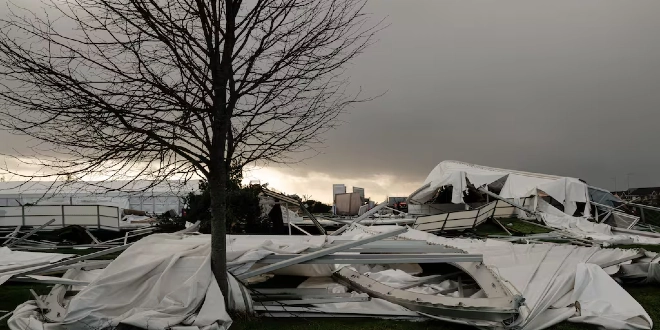The impact of Storm Éowyn was all-pervasive, with an estimated 74,000 homes, farms, and businesses still without electricity, and tens of thousands still disconnected from broadband services. Utility companies and the government have been hard at work to restore the vital services, but frustration among residents and business owners is on the rise.
Eir confirmed around 20,000 customers mainly in Galway, Mayo, Roscommon, Leitrim, Monaghan and Donegal remain without broadband. Managing Director of Open eir Networks Una Stafford said the progress to date had been very good but significant work remains to be done. Recovery will continue for weeks into the future with crews repairing damaged infrastructure.
Of course, the most recent reports indicated 1.5% of landline users remained affected and 5.65% of mobile users; the worst hit areas were the north and west according to Government sources.
ESB Networks Regional Manager Brian Tapley said it will take until at least February 5th or 6th to have a full restoration of electricity. While repairs on the medium-voltage networks are well underway, works on the low-voltage systems will start next week; every repair restores power to very few customers. Further generators have come in from Poland to supplement their efforts, and they cannot resolve all issues. Information hubs were set up across the worst-affected areas for those still out of supply.
Water Supply and Agricultural Impact
Irish Water reported that fewer than 800 homes and businesses without water, and that alternative supplies of water were available to those affected. Meanwhile, the Irish Farmers’ Association said it was frustrated at the continued lack of power and, in some areas, water, in rural areas and called for a Government-led review into the response to the storm.
IFA Deputy President Alice Doyle called for the establishment of a task force to deal with the vulnerabilities highlighted by the storm. She said while the immediate focus is on the restoration of services, long-term planning must be put in place to deal more effectively with future extreme weather events. IFA Connacht Regional Chair Brendan Golden said farmers are under immense pressure as they try to look after livestock without key utilities.
Government Response and Future Planning The Taoiseach Micheál Martin said people affected by Storm Éowyn are going through a very trying time and those lessons would be learned from. “Severe weather events like this are occurring with greater regularity and obviously that demands an enhanced response at government level in respect of crises like this.”.
Minister for Agriculture Martin Heydon said it will take some time to understand the full extent of the damage to the agricultural sector. He likened the damage to Storm Darwin in 2014, which destroyed 1% of the national forestry estate. He said mapping out the full extent of the damage will require input from farmers, forestry officials, and fisheries representatives.
Business Owners Facing Major Losses
Businesses have taken particularly painful wounds from the aftermath of the storm. Clíona Standún, Managing Director of Standún Clothing and Gift Stores in both An Spidéal and Oughterard, described the situation as “devastating.” Her store in An Spidéal has been out of power for over a week, significantly crippling operations.
She said the needs of rural communities are not being treated seriously despite repeated appeals to local TDs for urgency on the issue. Standún described it as a “humanitarian crisis” and a “national emergency, with rural areas seemingly being treated as second-class citizens compared to the major cities.
With an estimated 100 trees down in her area, she remembered how residents were warned in advance that Storm Éowyn could be one of the worst storms on record. While power was restored to her Oughterard store, ongoing system failures have prevented full business operations, including processing gift cards and credit notes.
The store in An Spidéal remains closed, further highlighting the economic strain that businesses are undergoing due to the storm’s assault.
Authorities are still working on the restoration of these services, but full recovery will take some time. With ongoing concerns about climate-related extreme weather, the government faces pressure to rethink response strategies and improve infrastructure resilience. In the meantime, affected communities are having to rely on emergency supports and temporary solutions to cope with the disruption.
 The Daily Star Ireland
The Daily Star Ireland



